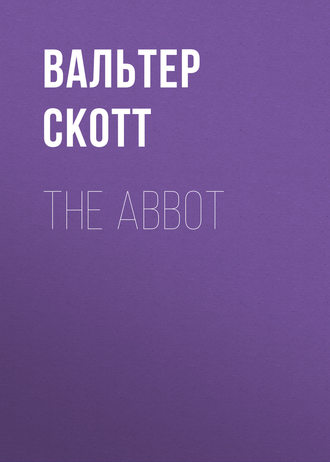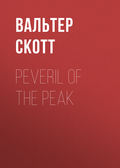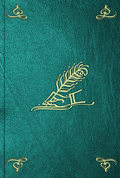
Вальтер Скотт
The Abbot
The Abbot and Roland journeyed to Avenel, where the former was tenderly received by his brother, while the lady wept for joy to find that in her favourite orphan she had protected the sole surviving branch of her own family. Sir Halbert Glendinning and his household were not a little surprised at the change which a brief acquaintance with the world had produced in their former inmate, and rejoiced to find, in the pettish, spoiled, and presuming page, a modest and unassuming young man, too much acquainted with his own expectations and character, to be hot or petulant in demanding the consideration which was readily and voluntarily yielded to him. The old Major Domo Wingate was the first to sing his praises, to which Mistress Lilias bore a loud echo, always hoping that God would teach him the true gospel.
To the true gospel the heart of Roland had secretly long inclined, and the departure of the good Abbot for France, with the purpose of entering into some house of his order in that kingdom, removed his chief objection to renouncing the Catholic faith. Another might have existed in the duty which he owed to Magdalen Graeme, both by birth and from gratitude. But he learned, ere he had been long a resident in Avenel, that his grandmother had died at Cologne, in the performance of a penance too severe for her age, which she had taken upon herself in behalf of the Queen and Church of Scotland, as soon as she heard of the defeat at Langside. The zeal of the Abbot Ambrosius was more regulated; but he retired into the Scottish convent of – , and so lived there, that the fraternity were inclined to claim for him the honours of canonization. But he guessed their purpose, and prayed them, on his death-bed, to do no honours to the body of one as sinful as themselves; but to send his body and his heart to be buried in Avenel burial-aisle, in the monastery of Saint Mary’s, that the last Abbot of that celebrated house of devotion might sleep among its ruins.
[Footnote: This was not the explanation of the incident of searching for the heart, mentioned in the introduction to the tale, which the author originally intended. It was designed to refer to the heart of Robert Bruce. It is generally known that that great monarch, being on his death-bed, bequeathed to the good Lord James of Douglas, the task of carrying his heart to the Holy Land, to fulfil in a certain degree his own desire to perform a crusade. Upon Douglas’s death, fighting against the Moors in Spain, a sort of military hors d’oeuvre to which he could have pleaded no regular call of duty, his followers brought back the Bruce’s heart, and deposited it in the Abbey church of Melrose, the Kennaquhair of the tale.
This Abbey has been always particularly favoured by the Bruce. We have already seen his extreme anxiety that each of the reverend brethren should be daily supplied with a service of boiled almonds, rice and milk, pease, or the like, to be called the King’s mess, and that without the ordinary service of their table being either disturbed in quantity or quality. But this was not the only mark of the benignity of good King Robert towards the monks of Melrose, since, by a charter of the dale 29th May, 1326, he conferred on the Abbot of Melrose the sum of two thousand pounds sterling, for rebuilding: the church of St. Mary’s, ruined by the English; and there is little or no doubt that the principal part of the remains which now display such exquisite specimens of Gothic architecture, at its very purest period, had their origin in this munificent donation. The money was to be paid out of crown lands, estates forfeited to the King, and other property or demesnes of the crown.
A very curious letter written to his son about three weeks before his death, has been pointed out to me by my friend Mr. Thomas Thomson, Deputy-Register for Scotland. It enlarges so much on the love of the royal writer to the community of Melrose, that it is well worthy of being inserted in a work connected in some degree with Scottish History.
LITERA DOMINI REGIS ROBERTI AD FILIUM SUUM DAVID.
“Robertius dei gratia Rex Scottorum, David precordialissimo filio suo, ac ceteris successoribus suis; Salutem, et sic ejus precepta tenere, ut cum sua benedictione possint regnare. Fili carissime, digne censeri videtur filius, qui, paternos in bonis mores imitans, piam ejus nititur exequi voluntatem; nec proprie sibi sumit nomen heredis, qui salubribus predecessoris affectibus non adherit: Cupientes igitur, ut piam affectionem et scinceram delectionem, quam erga monasterium de Melros, ubi cor nostrum ex speciali devotione disposuimus tumularidum, et erga Religiosos ibidem Deo servientes, ipsorum vita sanctissima nos ad hoc excitante, concepimus; Tu ceterique successores mei pia scinceritate prosequarimi, ut, ex vestre dilectionis affectu dictis Religiosis nostri causa post mortem nostrum ostenso, ipsi pro nobis ad orandum ferveucius et forcius animentur: Vobis precipimus quantum possumus, instanter supplicamus, et ex toto corde injungimus, Quatinus assignacionibus quas eisdem yiris Religiosis et fabrica Ecclesie sue de novo fecimus ac eciam omnibus aliis donacionibus nostris, ipsos libere gaudere permittatis, Easdem potius si necesse fuerit augmentantes quam diminuentes, ipsorum peticiones auribus benevolis admittentes, ac ipsos contra suos invasores et emuios pia defensione protegentes. Hanc autem exhortacionem supplicacionem et preceptum tu, fili ceterique successores nostri prestanti animo complere curetis, si nostram benedictionem habere velitis, una cum benedictione filii summi Regis, qui filios docuit patrum voluntates in bono perficere, asserens in mundum se venisse non ut suam voluntatem faceret sed paternam. In testimonium autem nostre devotionis ergra locum predictum sic a nobis dilectum et electum concepte, presentem literam Religiosis predictis dimittimus, nostris successoribus in posterum ostendendam. Data apud Cardros, undecimo die Maij, Anno Regni nostri vicesimo quarto.”
If this charter be altogether genuine, and there is no appearance of forgery, it gives rise to a curious doubt in Scottish History. The letter announces that the King had already destined his heart to be deposited at Melrose. The resolution to send it to Palestine, under the charge of Douglas, must have been adopted betwixt 11th May 1329, the date of the letter, and 7th June of the same year, when the Bruce died; or else we must suppose that the commission of Douglas extended not only to taking the Bruce’s heart to Palestine, but to bring it safe back to its final place of deposit in the Abbey of Melrose.
It would not be worth inquiring: by what caprice the author was induced to throw the incident of the Bruce’s heart entirely out of the story, save merely to say, that he found himself unable to fill up the canvass he had sketched, and indisposed to prosecute the management of the supernatural machinery with which his plan, when it was first rough-hewn, was connected and combined.]
Long before that period arrived, Roland Avenel was wedded to Catherine Seyton, who, after two years’ residence with her unhappy mistress, was dismissed upon her being subjected to closer restraint than had been at first exercised. She returned to her father’s house, and as Roland was acknowledged for the successor and lawful heir of the ancient house of Avenel, greatly increased as the estate was by the providence of Sir Halbert Gleninning, there occurred no objections to the match on the part of her family. Her mother was recently dead when she first entered the convent; and her father, in the unsettled times which followed Queen Mary’s flight to England, was not averse to an alliance with a youth, who, himself loyal to Queen Mary, still held some influence, through means of Sir Halbert Glendinning, with the party in power.
Roland and Catherine, therefore, were united, spite of their differing faiths; and the White Lady, whose apparition had been infrequent when the house of Avenel seemed verging to extinction, was seen to sport by her haunted well, with a zone of gold around her bosom as broad as the baldrick of an Earl.






